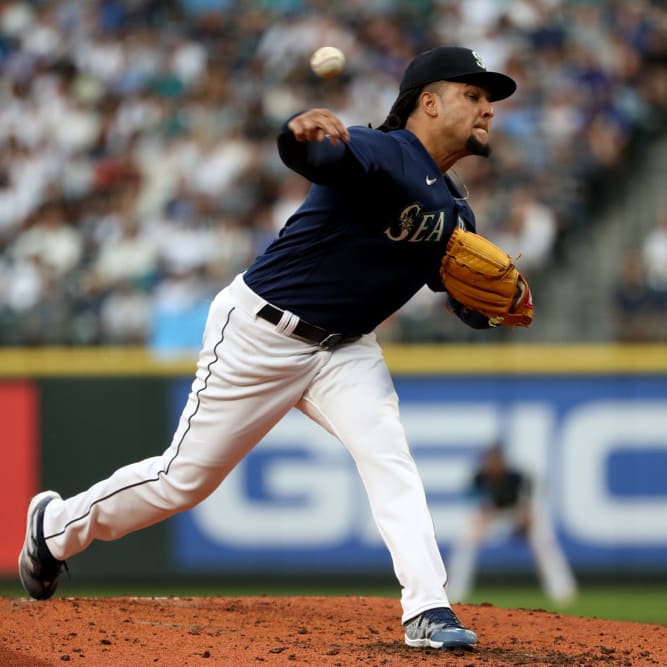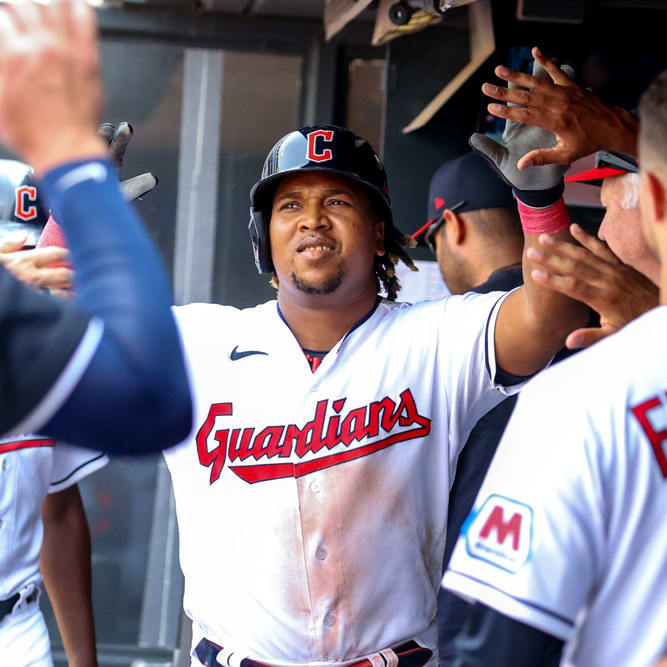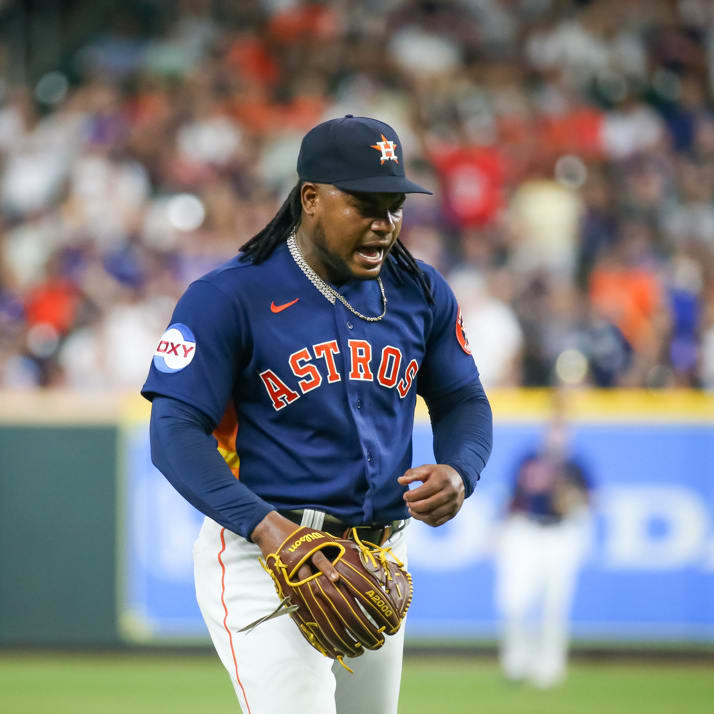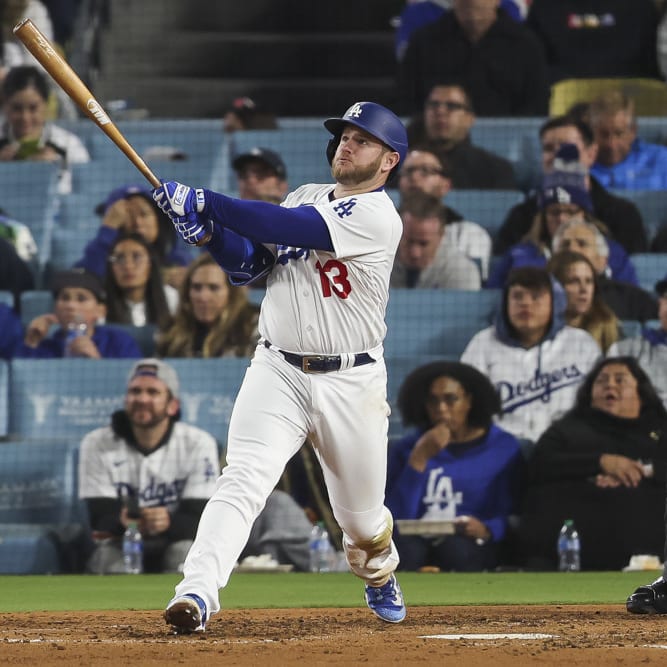This article is part of our The Z Files series.
I was wrong. Very, very wrong. Let's look at how the soondae is made.
In a nutshell, the standard means of projecting a hitter is determining a baseline using a three-year weighted average of the player's performance. This is adjusted per a player's age and home park(s). Some of the luck-based metrics, such as batting average on balls in play (BABIP) and home run per fly ball (HR/FB), are regressed to flesh out the variance.
When some of a player's previous three seasons weren't played in the majors, it's necessary to incorporate major league equivalencies (MLE). Bill James first introduced the notion of MLEs in his 1985 Baseball Abstract and has referred to it as his most important contribution to analytics. In short, an MLE translates a player's performance from the league in question to The Show. It's applicable to minor leagues, Japanese and Korean leagues and even Cuba. The translation involves adjusting for league talent and run scoring environment, including park data when available.
I'm not going to lie; my Korea Baseball Organization (KBO) MLEs are not particularly robust. That said, due to the small number
I was wrong. Very, very wrong. Let's look at how the soondae is made.
In a nutshell, the standard means of projecting a hitter is determining a baseline using a three-year weighted average of the player's performance. This is adjusted per a player's age and home park(s). Some of the luck-based metrics, such as batting average on balls in play (BABIP) and home run per fly ball (HR/FB), are regressed to flesh out the variance.
When some of a player's previous three seasons weren't played in the majors, it's necessary to incorporate major league equivalencies (MLE). Bill James first introduced the notion of MLEs in his 1985 Baseball Abstract and has referred to it as his most important contribution to analytics. In short, an MLE translates a player's performance from the league in question to The Show. It's applicable to minor leagues, Japanese and Korean leagues and even Cuba. The translation involves adjusting for league talent and run scoring environment, including park data when available.
I'm not going to lie; my Korea Baseball Organization (KBO) MLEs are not particularly robust. That said, due to the small number of players that have come over from the KBO, no one's translation is perfect. The consensus is the level of play is somewhere between the Double-A and Triple-A level, while the run-scoring environment is high.
I don't have KBO park data nor do I trust the accuracy of what's out there. I do, however, accept the level of play. As such, my KBO MLE is an average of all Double-A and Triple-A MLEs. There are more Double-A teams so the average tilts the MLEs towards in that direction. This says the quality is more reminiscent of Double-A caliber than Triple-A, and I'm fine with that.
Here's Thames' statistics from 2014-2016 with the NC Dinos of the KBO:
| Year | PA | AB | R | H | HR | RBI | BB | SO | BA | OBP | SLG |
| 2016 | 525 | 432 | 117 | 137 | 40 | 118 | 74 | 103 | 0.317 | 0.425 | 0.676 |
| 2015 | 595 | 472 | 130 | 180 | 47 | 140 | 103 | 91 | 0.381 | 0.497 | 0.790 |
| 2014 | 514 | 443 | 95 | 152 | 37 | 121 | 58 | 99 | 0.343 | 0.422 | 0.688 |
Now here's the above with the KBO MLEs applied, including the weighted average baseline for the 2017 season:
| Year | PA | AB | R | H | HR | RBI | BB | SO | BA | OBP | SLG |
| 2014 | 514 | 459 | 68.9 | 125.5 | 26.8 | 87.8 | 42 | 117.1 | 0.273 | 0.340 | 0.511 |
| 2015 | 595 | 500.3 | 94.3 | 148.6 | 34.1 | 101.6 | 74.7 | 107.6 | 0.297 | 0.397 | 0.586 |
| 2016 | 525 | 452.4 | 84.9 | 113.1 | 29 | 85.6 | 53.6 | 121.8 | 0.250 | 0.341 | 0.517 |
| 2017 | 545.3 | 468.8 | 85.5 | 126.7 | 30.21 | 91.59 | 58.22 | 116.4 | 0.270 | 0.360 | 0.536 |
Finally, here's Thames' projection when the park factors for lefty swingers in Miller Park are applied, giving him a conservative 600 plate appearances, 44 fewer than Chris Carter garnered in 2016:
| Year | PA | AB | R | H | HR | RBI | BB | SO | BA | OBP | SLG |
| 2017 | 600 | 517 | 96 | 148 | 41 | 102 | 62 | 129 | 0.286 | 0.372 | 0.596 |
Yikes! That's Carter with 64 more points in batting average. That seems… aggressive.
There's two factors that have yet to be accounted for: run environment and age versus level. I'll be honest, this is a subjective call. The run environment can be quantified and I've seen estimates of 10 percent, so dinging Thames skills by that amount seems reasonable. Now we're looking at:
| Year | PA | AB | R | H | HR | RBI | BB | K | BA | OBP | SLG |
| 2017 | 600 | 523 | 86 | 134 | 37 | 92 | 56 | 143 | 0.256 | 0.338 | 0.533 |
That's still Khris Davis, Todd Frazier, Mark Trumbo territory – all of whom, of course, are Top 350 fantasy players.
The next iteration is even more off-the-cuff. One of the most important aspects when considering a prospect's minor league numbers is age versus level. It goes without saying the same slash line by a 22-year old hitter in Double-A is more impressive than from a 28 or 29-year old. That's what we're dealing with here, as Thames turned 30 in early November. He needs to be penalized for age versus level in the translation. The problem is the lack of older minor leaguers destroying Double-A then getting promoted when they were 30. As such, we're forced to make a guess. Let's dock Thames another 10 percent:
| Year | PA | AB | R | H | HR | RBI | BB | K | BA | OBP | SLG |
| 2017 | 600 | 529 | 76 | 119 | 33 | 82 | 50 | 161 | 0.225 | 0.303 | 0.471 |
Frankly, I'm still not satisfied with this projection. The power seems high while the average feels low. Anecdotally, I've found power hitters moving into a venue that favors home runs don't realize the full extent of the park factor. As an aside, keep this in mind if either Mark Trumbo or Carter sign with Colorado; that's a conundrum for another day. With respect to Thames, knocking off five homers passes the sniff test.
The low batting average can be handled by regressing hit rate to league norm. Stripping Thames skills by 20 percent lowers his BABIP below a plausible number based on league norms. Adjusting homers and BABIP lands me at:
| Year | PA | AB | R | H | HR | RBI | BB | K | BA | OBP | SLG |
| 2017 | 600 | 533 | 79 | 134 | 28 | 86 | 47 | 166 | 0.251 | 0.322 | 0.465 |
Is this really the best representation of Thames' expectations? Who knows. There's a whole lot more subjectivity here than is normally associated with a projection, but based on circumstances, it's warranted.
Conspicuously absent from the discussion are the most precious fantasy commodity, stolen bases. It doesn't get any easier here, my friends. Not only did Thames rake in Korea, he ran too.
| YEAR | SB | CS |
| 2014 | 11 | 2 |
| 2015 | 40 | 8 |
| 2016 | 13 | 4 |
Hopefully you had Thames in your 2015 KBO fantasy league. What a season! Translating steals isn't scientific, in that it's an opportunity stat that's as much a product of team tendencies as it is a player's skills. Look at Ben Revere and how his swipes changed as he changed teams. Complicating matters with Thames is the Milwaukee Brewers are given the green light as soon as they step off the bus. Spot in the batting order doesn't matter either. Last season, the Brewers No. 3 hitters stole 23 bags and clean-up swiped 19, while six-hole hitters pilfered 22. If Ryan Braun can steal 16, Thames can be in that neighborhood, so add 14 bags to his stat line.
Based on my early projections, a rotisserie line of .251-28-86-14-79 results in a $16 valuation in 15-team mixed league. That's good for the 67th-best hitter and 89th-best overall player. I guess I need to change my answer to DVR's tweet.
Now the real question. What's my confidence level in that projection? Honestly, not very high. The nature of what I do requires the germination of a static projection. My head says Thames has the upside of Davis (with a K), Trumbo and Frazier. My heart says Thames could flame out and Milwaukee will miss letting Carter walk.
The way I think as a fantasy player is different than my approach as a prognosticator. In early drafts, we're all working blind. Without having an idea of where the market ranks Thames, we're all left to our own devices. I'm not picking Thames at the 6/7 wheel, as suggested by his value-in-a-vacuum, but I'm not waiting until the end-game either. That leaves a lot of gray area. My gut is saying once the rounds in a 15-team league reach double digits, Thames is in play. It'll be necessary to build in an exit strategy by making sure Thames occupies the corner spot with another corner eligible player at Utility, or perhaps with dual outfield eligibility. Once the market is established for Thames, it's a matter of deciding if it's too risky to jump at that price to make sure he's on my roster.
It'll be interesting to see where my colleagues rank Thames. He'll be in the 150 range for me. Tag, you're it, Jeff, Tim, Clay and DVR.










